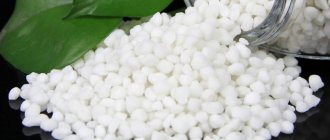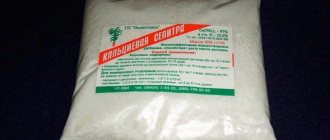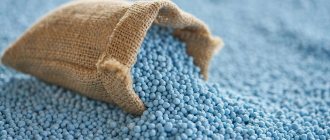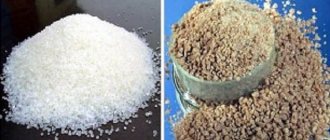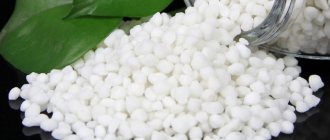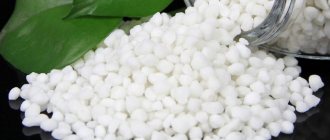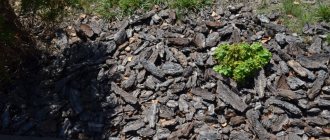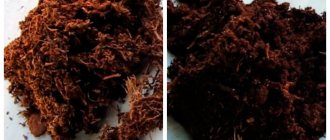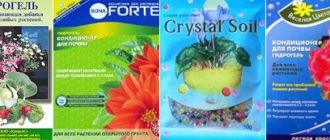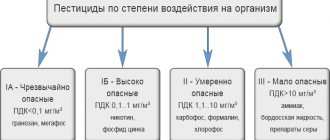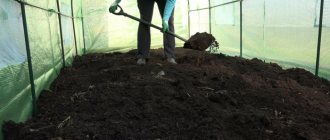Properties
Calcium nitrate or calcium nitrate is an inorganic substance obtained synthetically. Consists of 15.5% nitrogen and 19% calcium, and is white granules. It is used as a fertilizer for foliar feeding and to combat crop diseases. Calcium nitrate is the only water-soluble source of calcium, so it is often available in liquid form.
Fertilizer helps regulate water in plant tissues, enhances photosynthesis, and reduces soil acidity. This promotes the development of microorganisms that retain nitrogen in the soil. The drug maintains healthy cell walls in plants and helps them absorb other nutrients from the soil.
Foliar spraying prevents color loss in crops and disease of fruits of apple trees, tomatoes and peppers.
Release form
Calcium nitrate is available in two types:
granular and crystalline. The main disadvantage of crystalline calcium nitrate is its increased hygroscopicity; if you have a choice, it is better to use this fertilizer in granular form.
Granulated calcium nitrate is more convenient to handle, does not generate dust during application, and absorbs less water from the environment.
Photo of calcium nitrate
Manufacturers most often package this fertilizer in 1 kg bags, but there are small bags of calcium nitrate with a capacity of 20 and 25 g.
Pros and cons of fertilizer
The drug has its advantages and disadvantages.
Calcium nitrate has more advantages than disadvantages:
- it is a good source of nitrogen;
- it facilitates the absorption of calcium, because contains nitrogen in the form of nitrates;
- calcium is a constituent element of the substance, consumed by plants in large quantities;
- maintains the porous structure of the soil;
- increases productivity and product quality;
- enhances plant resistance to diseases and pests;
- improves product transportability;
- extends the shelf life of fruits;
- contains no additives or fillers;
- does not evaporate, is not washed off and does not cause burns;
- does not increase the alkaline composition of the soil;
- does not increase salt in the soil.
Disadvantages include:
- it is not organic matter;
- Application on open ground is less effective compared to indoor plants.
Useful qualities of fertilizer
This fertilizer helps to increase plant productivity; if the dosage is not violated when applied to the soil, then calcium nitrate does not accumulate in the soil and fruits, and also does not create dangerous compounds.
In addition, the following effect from the use of fertilizer is noted:
- The immunity of garden and vegetable crops is strengthened, plants become more resistant to changes in temperature, attacks by pests and various diseases. Tomatoes and bell peppers, when fertilized with calcium nitrate, are less affected by root or blossom end rot, and cabbage or radishes are less affected by clubroot;
- foliage and root system develop faster, as a result, the process of photosynthesis in plants accelerates;
- tubers, bulbs and other seed material treated with calcium nitrate sprout faster;
- the fertilizer reduces the acidity of the soil, is capable of absorbing metals from the soil, and prevents the formation of dangerous chemical compounds. As a result, soil quality improves;
- The quality of ripened fruits also improves - the amount of sugars increases, the commercial quality becomes better, the ripening of fruits occurs faster, and the shelf life of the crop increases.
Signs of calcium nitrate deficiency
Calcium nitrate consists of 2 components: nitrogen and calcium. The deficiency of each of them manifests itself in the plant.
Lack of calcium leads to:
- to the acquisition of brown color and death of the tips of young leaves;
- to leaf curling;
- premature falling of flowers;
- to the formation of corky spots on the fruits of garden crops.
Nitrogen deficiency manifests itself:
- in the slow growth of new shoots;
- pale leaves in the middle of the growing season;
- fewer leaves than in previous years;
- early fall of leaves before autumn.
If there is a lack of nitrogen, mineral fertilizer - urea - is also suitable for feeding.
Methods of application
There are no special technologies for using calcium nitrate. Fertilizer is used in the following variants:
- in the form of granules (scattered on the ground with subsequent mandatory sealing). Timing – spring (digging ridges in open ground) or autumn (only for winter crops);
- foliar spraying on leaves (for any crops on the site, as well as in indoor floriculture). A liquid solution is used;
- watering at the root (for seedlings, after planting crops, and also when seedlings emerge).
The calcined solution is recommended before planting seedlings, sowing seeds, and also during subsequent periods of the growing season.
The need for fertilizing of various crops
The use of calcium nitrate is necessary. Plants require calcium and nitrogen to survive. You can buy calcium nitrate at any garden store; it is a common fertilizer.
Calcium improves the quality of fruits, extends their shelf life, helps plants form seeds, and protects them from diseases and stress.
Nitrogen is an important component in the production of amino acids and chlorophyll. When there is enough of it, the plants have a lush green mass.
Some plants may be more susceptible to calcium deficiency than others. Tomatoes feel this in the heat, their leaves curl inward and their flowers fall off. In apple trees, a cork spot forms on the fruit - fruit rot.
Do not feed the drug to plants that prefer acidic soils, for example: azaleas, ferns, hydrangeas.
The following may die from regular feeding: decorative maple, chamomile, acacia, barberry, honeysuckle, viburnum.
Bulbous flowers, clematis, phlox, such as Drummond's phlox, dahlias, stone fruit trees and grapes love this fertilizer. For pumpkin and nightshade crops, the use of fertilizer is mandatory.
They respond well to feeding: cabbage, legumes, onions and garlic.
Advantages and disadvantages of the drug
Plants do not absorb nitrogen well in acidic soil. Urea and ammonium nitrate increase the acidity of the area. Calcium nitrate, on the contrary, promotes alkalization of the soil and has a complex effect, so the benefits of use are noticeable after 2-3 weeks. Beneficial bacteria actively develop in the soil, which improve its structure. The product neutralizes the entry of harmful salts and metals into planting tissue.
Exceeding the dosage of the drug or incorrectly chosen timing of treatment can lead to negative reactions. Excess fertilizer destroys roots and tops. The underground parts stop absorbing water and nutrients. The incoming liquid provokes the appearance of rot.
Instructions for using fertilizer
Application of calcium nitrate on different types of soils
Calcium nitrate can be used on various types of soil. The best effect is obtained from using the fertilizer on soddy-podzolic, slightly acidic and acidic soils. As a result, the acidity of the soil is neutralized, the soil becomes porous and fertile, and harmful microorganisms and fungi are destroyed.
A weak solution of the drug can be used to treat clay soils and sandy loams.
Deadlines for depositing
It is better to apply calcium nitrate in the spring, when cultivating the site.
The use of fertilizer during autumn digging is not so effective, because... Nitrogen is washed away by groundwater in the spring. Calcium concentration increases, which is harmful to plant roots.
Dosage
The dosage of calcium nitrate when used depends on the purpose of using the fertilizer, the type and age of the plants.
To treat diseased plants, use 4 tablespoons of fertilizer per 5 liters of water. To prevent diseases, 1 tablespoon of the drug is diluted in 5 liters of water. Different crops may have different dosages for feeding.
How to dilute calcium nitrate
The use of calcium nitrate involves diluting the drug in a ratio of 20-25 g. substances per 10 liters of water.
Use:
- for fruit trees, apply at the beginning of the growing season in March-April;
- Water the berries 2 times before flowering begins;
- for vegetables, use the same solution, apply every 10 days.
Calcium nitrate, how to use
In dry form, the drug is used when digging up a site or planting seedlings. Most often, calcium nitrate is used in solutions for root and foliar feeding.
Foliar feeding
The greatest effect can be obtained by spraying plants. For this 2 gr. Dilute the preparation in 1 liter of water and spray on the leaves. Use every 10 days if not using other fertilizers. Liquid consumption per 1 sq. meter 200 ml. drug.
Foliar feeding improves the taste of berries and fruits.
Root feeding with calcium nitrate
Under the root of the plant you need to add 0.5 liters of the drug solution. Dilute 20 grams in 10 liters of water. substances and feed the crops in the evening, on moist soil. Water the root circle of plants. This type of feeding has a long-term effect; foliar feeding gives instant results.
Features of self-preparation of calcium nitrate
Due to the simple formula and method of obtaining it, some summer residents prefer to prepare the fertilizer themselves, but the quality of such a product, contrary to popular belief, will be lower than the factory and laboratory versions due to its high hygroscopicity and low shelf life. For preparation, ammonium nitrate and slaked lime are used.
The structure of the “tank” is assembled from several bricks; you will also need gloves, a household respirator, firewood, a 3-liter aluminum pan, and other materials. It is necessary to prepare the mixture away from living quarters, as the process will release an unpleasant, astringent odor.
300 g of ammonium nitrate and 0.5 liters of water are poured into the prepared container. The resulting solution is brought to a boil over fire. After this, 150 g of slaked lime is poured into the bubbling pan in small portions (20-30 grams). The time to add the entire volume is 30-40 minutes. Next, “cook” it all for an hour or more, depending on the strength of the fire. And as soon as the characteristic ammonia smell ceases to emanate from it, the container is removed from the flame and allowed to brew until a dark limescale sediment forms.
The cooled liquid is filtered through a sieve and poured into a separate bowl. In this way, a mother solution with suboptimal indicators is obtained, but suitable for use as a fertilizer for garden plants, especially trees and shrubs.
The use of calcium nitrate in the garden
As mentioned above, the drug is used in dry form and in solution. It is important not to exceed the norm for using the product. To do this, carefully read the instructions for its use.
Feeding seedlings with calcium nitrate
To feed seedlings, dissolve 10 grams in 5 liters of water. saltpeter, 5 gr. urea and 50 gr. ash.
The first feeding is carried out with the appearance of 3 leaves, the second – 10 days after the dive. You should try not to get it on the leaves of the plant.
When to use for flowers
Flowers should be fed with calcium nitrate when they grow poorly or form small buds.
Root fertilizing is carried out every 10 days from the moment of emergence. You can alternate them with foliar treatments. Use 1 teaspoon of the drug per 1 liter of water.
The use of calcium nitrate for tomatoes
Tomatoes love feeding with calcium nitrate, this protects them from pests and black rot. Spray the plants once with a solution of the substance at the beginning of the growing season. Apply root feeding every 10 days. To do this, dissolve 20 g. the drug in a bucket of water and pour or spray on the root circle of the plant.
For cucumbers
Feed the cucumbers every 8 days until the ovaries appear. For root feeding of the plant, dissolve 2 grams. substances in 1 liter of water. Spray with the preparation when 3 leaves appear. We recommend that you look at the article - How to fertilize cucumbers.
Types of the drug
Calcium nitrate comes in two forms: white granules and a translucent crystalline salt. The popular product is produced by different people, aimed at medium and large farms, and packages products in one-kilogram bags. The Buyskie Fertilizers brand offers three types of packaging:
- 20 g;
- 25 g;
- 1 kg.
Manufacturers indicate a warranty shelf life of 2 years. The granules practically do not absorb moisture. The chemical in the package does not cake and does not lose its original characteristics over time. Crystals blur and become damp, so they should only be kept in a sealed bag or in a dry room.
Feeding flowers
Calcium nitrate is very useful for flowers, ensuring the formation of green mass and protecting them from rot. After excessive watering or prolonged rains, saltpeter granules are able to absorb excess moisture, thereby saving the roots from rotting. In addition, the substance penetrates the stems and increases their resistance to disease.
Often the use of calcium nitrite helps flowers retain their decorative qualities . As soon as the flowers begin to develop, gardeners apply fertilizer to the root system every 10 days.
The concentration of the solution is the same as for vegetables.
Treating flowers with sodium calcium will help protect them from rot.
When the flowers grow up, they begin to carry out foliar feeding. At an early stage of development, calcium nitrate strengthens the stems and leaves of young flowers, which gives them the ability to withstand strong winds.
Precautionary measures
Calcium nitrate must be stored in sealed original packaging. An opened pack should be kept in a dry place and used within six months.
The substance belongs to hazard class III. This means that during standard use it is not hazardous to humans or the environment. Strong concentrations can cause burns to the skin and mucous membranes. All actions with fertilizer must be carried out carefully, wearing work clothes and rubber gloves. If the chemical gets on the skin or in the eyes, rinse with running water; if crystalline dust is inhaled, rinse the mucous membranes; if accidentally swallowed, drink a large volume of water, take activated charcoal and consult a doctor.
Information about the explosiveness of calcium nitrate is very contradictory. calls the substance “explosion-proof and non-flammable”, Gostekhnadzor says the same. However, the Infomine research group warns that with strong shaking or impact, the chemical can ignite explosively (similar to ammonium nitrate).
Cargo carriers note: calcium nitrate practically does not ignite when ignited, but when heated and subjected to strong impact, it can decompose with an explosion and flame, releasing toxins. It is recommended to keep the fertilizer separate from any other substances, from rotting organic matter, and away from fire. The fire is extinguished with a very large amount of water. The compacted fertilizer mass is not broken up with blows, but dissolved.
Calcium nitrate is a valuable nitrogen fertilizer for gardeners and gardeners, farms and peasant farms. Its use is especially beneficial on lands with high acidity. Improved nutrition and stimulation of immunity are observed in those cultivated plants that prefer a less acidic reaction of the soil solution.
Features of application for seedlings
Calcium nitrate is not usually used as a fertilizer for seedlings during the plant growing stage. Application is indicated only if there are clear signs of calcium deficiency.
Experts recommend using fertilizer after planting seedlings in beds or greenhouses: to reduce stress, improve survival rate, and stimulate root growth. This additive is especially effective on acidic and depleted soils.
Application time: approximately 8-12 days after transplantation (watering). It is used on cabbage, peppers, and eggplants; additional fertilizing is also required for tomatoes.
Who is calcium nitrate not friendly with?
Speaking about the versatility of the drug, they note that such feeding is not suitable for a number of plants. This is due to the ability of fat to alkalize the soil, reducing acidity.
Plants that prefer acidic soils do not need calcium nitrate fertilizing. Among them are common heather, juniper, and buckthorn. Hydrangeas, lupins, peonies, and purslane grow well in slightly acidic soils.
Fertilizing is not suitable for all types of conifers, ferns, cultivated forest berries (blueberries, lingonberries), and rhododendrons. Viburnum, any variety of acacia, and honeysuckle, which is popular among gardeners, are sensitive to excess calcium. They also grow better in soils with high pH values, so fertilizer containing calcium is not applied to such plantings.
